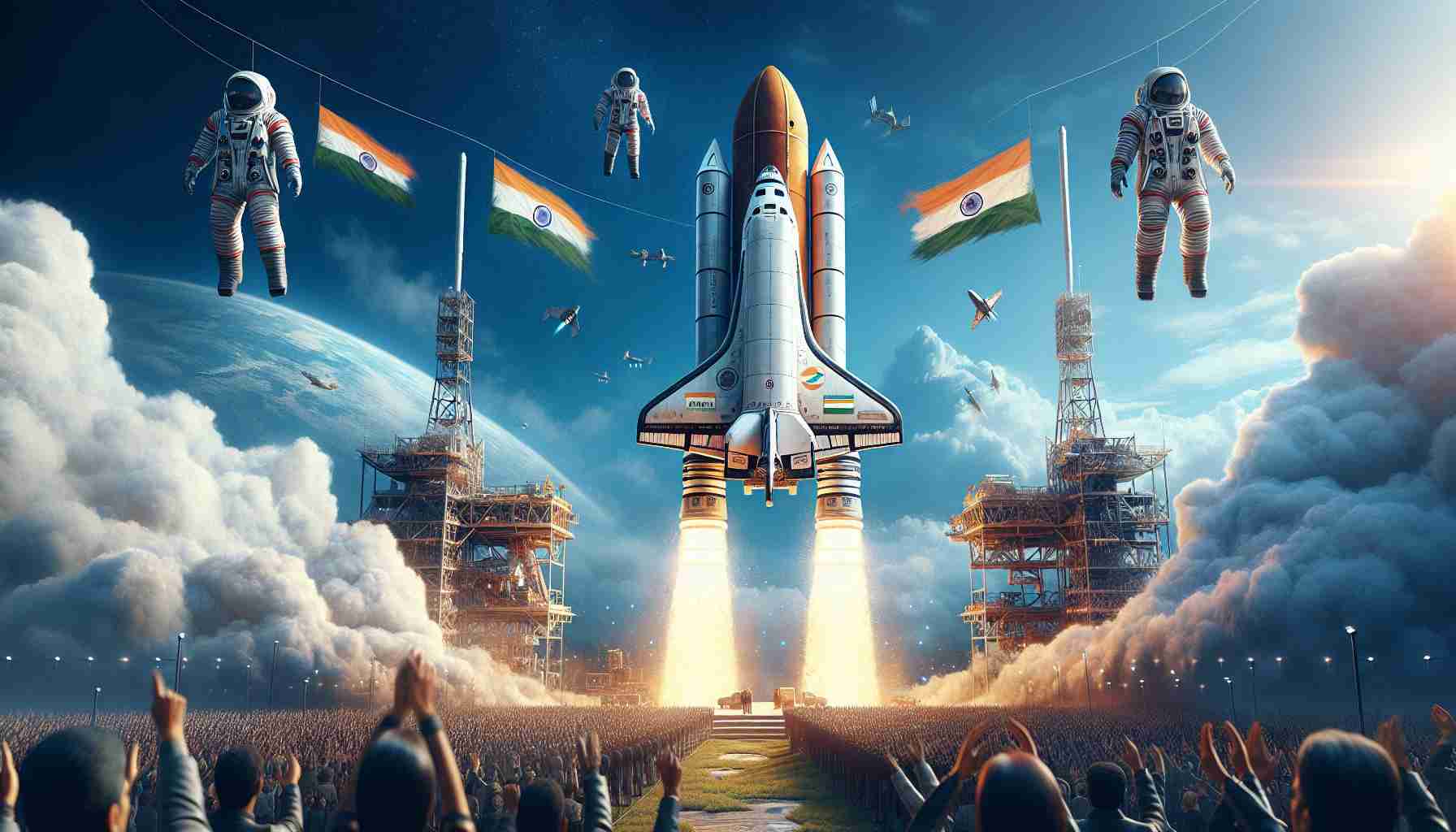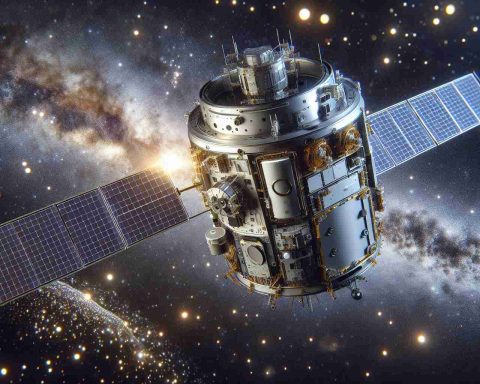India’s quest to launch astronauts into space is gaining momentum! During a recent visit to Thiruvananthapuram, ISRO chairman V. Narayanan shared exciting updates on the human space mission initiative, emphasizing an accelerated timeline.
He noted that the collaboration between ISRO and various partner organizations is proving fruitful, setting the stage for a successful human spaceflight. The ambitious Gaganyaan mission, aimed at sending astronauts aboard human-rated spacecraft, is currently in progress. Narayanan outlined plans for three preliminary unmanned missions, designated G1, G2, and G3, which will precede any crewed launches. Preparations for the first unmanned mission have already commenced at the Sriharikota launch site.
Additionally, Narayanan highlighted the importance of conducting various experiments involving parachutes, crew escape modules, and other critical components that are essential for mission safety. The recent successful docking of the SpaDex mission has been cited as a pivotal achievement, expected to contribute significantly to India’s future space station endeavors and human spaceflight projects.
As the teams dive into analyzing the results from SpaDex, Narayanan stressed that credit for these advancements belongs to the entire team rather than specific individuals. The future of India’s space exploration looks promising, with many believing that human space travel may soon be within reach.
The Cosmic Leap: India’s Space Ambitions and Their Global Significance
India’s strides towards human space exploration are not only a testament to its technological prowess but also a catalyst for broader societal and economic changes. The Gaganyaan mission signifies a turning point, pushing India into an elite group of nations capable of sending humans into space. This progress enhances India’s role in global space governance, fostering international collaboration on scientific and humanitarian fronts.
Human spaceflight initiatives can spark interest in STEM fields, particularly among the country’s youth. As aspirations rise, educational institutions may see a surge in enrolment for engineering and astrophysics programs, strengthening India’s technological workforce. This shift could stimulate job growth and bolster the economy, as skilled professionals drive innovations that transcend the aerospace sector.
Moreover, the environmental implications of launching missions into space are critical. ISRO’s commitment to sustainability in aerospace engineering may influence green technologies by promoting eco-friendly fuels and practices. As nations grapple with climate change, India’s forward-looking approach in space exploration could serve as a model for balancing technological advancement with environmental stewardship.
Looking ahead, India’s emerging position in space exploration could stimulate geopolitical dynamics, as partnerships and collaborations expand. With the potential establishment of a future space station, India may become central to international research efforts aimed at solving pressing global challenges, such as climate studies and resource management, thus reinforcing its significance in a rapidly evolving global economy.
India’s Gaganyaan Mission: Bridging Ambitions and Reality in Human Spaceflight
India’s Journey to Human Spaceflight
India’s commitment to human space exploration is on a rapid rise, with its ambitious Gaganyaan mission taking center stage. The Indian Space Research Organisation (ISRO), under the leadership of Chairman V. Narayanan, is working diligently towards realizing this goal, underscoring a collaborative effort that integrates various scientific and technological advancements.
Key Features of the Gaganyaan Mission
The Gaganyaan mission is designed to send Indian astronauts, known as “Gagannauts,” into low Earth orbit. Planned to follow a systematic approach, the mission comprises three unmanned flights (G1, G2, G3) that will test the necessary technologies and systems before any crewed missions take place.
1. Unmanned Missions:
– G1 Mission: The first unmanned mission will test key technologies, including the launch vehicle, capsule systems, and safety measures.
– G2 and G3 Missions: These missions will further refine the technologies and procedures, paving the way for human flight.
2. Safety Protocols:
– Emphasis on parachute deployment and crew escape modules ensures the safety and reliability of the spacecraft.
– Continuous improvements based on experimental data are a priority for ISRO’s engineers.
Innovations and Technological Advancements
India’s space program has witnessed numerous technological innovations in preparation for human spaceflight:
– Docking Technologies: The successful docking of the SpaDex mission serves as a landmark achievement, providing invaluable data that will bolster efforts towards a permanent Indian space station. This advancement also helps in understanding automated docking procedures essential for future missions.
– Landing Systems: Continuous testing of retrieval modules that simulate landing scenarios contributes to improving the spacecraft’s re-entry capabilities, enhancing safety during touchdown.
Pros and Cons of the Gaganyaan Mission
Pros:
– Technological Leadership: Establishes India as a significant player in human spaceflight and a competitor on the global stage.
– Scientific Research: Opens doors to new scientific experiments and research that can benefit life on Earth.
– National Prestige: Boosts India’s status as a technologically advanced nation, inspiring further innovations and education in science and technology.
Cons:
– Cost Implications: The substantial financial investment may raise concerns over budget priorities, especially when considering domestic issues.
– Technical Risks: The complexities of human spaceflight can pose unforeseen challenges, potentially endangering lives and resources.
Future Insights and Predictions
The future of India’s human space exploration program looks promising. With its strategic partnerships and a steadily improving technological base, ISRO is positioned to not only achieve its objectives but possibly exceed them. Predictions suggest that if current momentum is maintained, India’s first crewed mission could take place within the next few years.
Moreover, the insights gained from both the unmanned missions and the SpaDex docking will likely influence not just India’s space capabilities, but also nurture international collaborations in space exploration.
Sustainability and Security Aspects
As space travel continually evolves, the focus on sustainable practices is becoming increasingly essential. ISRO is committed to minimizing environmental impacts through responsible launches and satellite technologies. Security protocols surrounding spacecraft and astronaut safety are at the forefront of mission planning, reflecting a robust approach to mishap prevention.
Conclusion
India stands at the brink of a new era in space exploration with the Gaganyaan mission. With ongoing preparations and innovations, the vision of sending astronauts into space seems more achievable than ever. The combined efforts of ISRO and its partners promise not just advancements in technology but also a bright future for human endeavors beyond our planet.
To stay updated on ISRO’s missions and advancements in space technology, visit ISRO’s official website.















